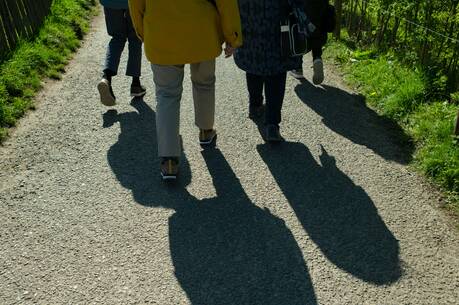The Light of Hope
For those of us living in the Northern Hemisphere, this is a season of short days and increased darkness. For some, it triggers depression brought on by chemical changes in the brain due to light deprivation. To help guard against this malady some leave their Christmas lights burning far into the winter. Others flee to the south to bask in the sun and the warmth. Today’s readings center on the light of God’s saving action that has dispelled the darkness of destruction and death. In the first reading, the light refers to the reversal of fortunes for Israel after the Syro-Ephraimite crisis (ca. 733 B.C.E.), when the Assyrian invaders overtook the area of the northern tribes. In the Gospel this same text is quoted, this time to refer to the light that has dawned with the coming of Jesus.
In the section immediately preceding today’s Gospel, Jesus had been 40 days in the desert, fasting, resisting the temptations of the devil, quoting Scripture and being ministered to by angels. These preparations make him ready to begin his prophetic ministry. The Gospel of John notes that, after his baptism, Jesus spent time baptizing in the Judean countryside, while John was baptizing at Aenon near Salim (Jn 3:22-23), a location likely in Samaria. Matthew’s Gospel picks up the story with John having been arrested, which prompts Jesus to return to the Galilee.
It is likely that John had moved on to the Galilee with his baptizing ministry, since it is Herod, tetrarch of Galilee, who imprisons him (Mt 14:1-12). The reason for Jesus’ return to Galilee may have been to pick up where John left off. This is an ominous move. Jesus does not go to his hometown of Nazareth, a sleepy village of a few hundred families, but to Capernaum, a bustling fishing town on the shore of the Sea of Galilee. It was located at the crossroads of the territories of Herod and Philip and along the Via Maris, the “Way of the Sea,” the international trade route that connected Damascus and Syria with Phoenicia and Egypt. This was a strategic choice by Jesus. The light he would ignite with his preaching, teaching and healing would have a far greater reach from such a locale.
One of the first things the Gospels recount is that, like moths drawn to a light, others are attracted by Jesus’ invitation to share in catching people in the net of the reign of God that is now at hand. It is a communal endeavor. In today’s Gospel, two pairs of brothers are called. In Luke’s Gospel, Mary from Magdala, another important fishing village on the shore of the Sea of Galilee, follows Jesus and ministers along with Joanna, Susanna and many other Galilean women (Lk 8:2-3). Their healing has prompted them to join Jesus to be agents of healing for others. The response of the disciples in today’s Gospel also initiates radical changes in their lives. They leave their occupation though they bring their skills with them to be used in a new way. There are also changes in their family relationships as the relationship with Jesus and devotion to his mission becomes their primary focus. While it is said that James and John left their father, later episodes in the Gospel imply that in the case of Peter his family home becomes a hub for the mission, in which his family members play an important role (e.g., Mt 8:14-17). Together, Jesus and his disciples spread the light of hope for those who struggle against the despair of disease, illness and sin. The forces that tried to extinguish this light in John will be no more successful in doing so with Jesus and his followers.
This article also appeared in print, under the headline “The Light of Hope,” in the January 24, 2011, issue.







